I'm writing a small GUI in python3/tkinter. What I want to do is generate a window with a table of data (like a spreadsheet) and have the table be scrollable both horizontally and vertically. Right now I'm just trying to display data, so I'm using a grid of Labels. The data display works fine but I can't get the scroll bars to act correctly. Here is the relevant part of my code; the class that this is in inherits from tk.Toplevel
frame = self.frame = tk.Frame(self)
self.frame.grid(row=1, columnspan=2, padx=2, pady=2, sticky=tk.N+tk.E+tk.S+tk.W)
self.text_area = tk.Canvas(self.frame, background="black", width=400, height=500, scrollregion=(0,0,1200,800))
self.hscroll = tk.Scrollbar(self.frame, orient=tk.HORIZONTAL, command=self.text_area.xview)
self.vscroll = tk.Scrollbar(self.frame, orient=tk.VERTICAL, command=self.text_area.yview)
self.text_area['xscrollcommand'] = self.hscroll.set
self.text_area['yscrollcommand'] = self.vscroll.set
self.text_area.grid(row=0, column=0, sticky=tk.N+tk.S+tk.E+tk.W)
self.hscroll.grid(row=1, column=0, sticky=tk.E+tk.W)
self.vscroll.grid(row=0, column=1, sticky=tk.N+tk.S)
self._widgets = []
for row in range(rows):
current_row = []
for column in range(columns):
label = tk.Label(self.text_area, text="",
borderwidth=0, width=width)
label.grid(row=row, column=column, sticky="nsew", padx=1, pady=1)
current_row.append(label)
self._widgets.append(current_row)
The table displays OK and the scrollbars appear but are not functional:

Any ideas?